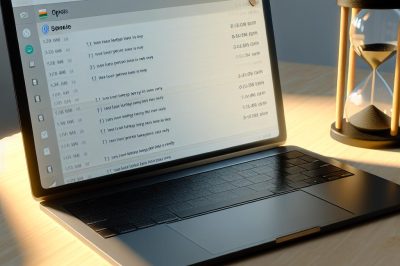Email Response Time: An Essential Guide
In the digital age, email communication has become a critical component of both professional and personal interactions. Understanding the optimal time to reply to emails can impact productivity, customer satisfaction, and even professional relationships. This article explores the nuances of email response times and offers strategies to improve your email communication efficiency.
Professional Correspondence
In professional settings, email response time is crucial. The expectation of a timely response is often linked to the nature of business practices. Many companies prefer receiving a response within 24 hours because it shows efficiency and consideration for the sender’s needs. The importance of rapid communication is even more pronounced in industries like customer service, where responding within a few hours might be essential to resolving issues and maintaining customer satisfaction.
Internally, within a company, email response times can vary significantly based on the nature of the project and team dynamics. For instance, urgent project-related queries might demand an immediate response, whereas general inquiries could wait until the same business day. Generally, acknowledging receipt of an email and providing an estimated timeline for a detailed response can greatly enhance internal communication efficiency.
Personal Emails
While professional emails often require quicker turnarounds, responses to personal emails can typically be more relaxed. Responding within 48 hours is usually considered polite. The timing in personal correspondence is influenced greatly by the relationship dynamics; friends or family may not expect immediate responses unless the matter is marked as urgent. However, it’s essential to recognize the nuances and context provided by the email’s content. Some personal matters may require immediate attention due to their significance, while others can afford a delay.
Factors Influencing Email Response Time
The appropriate response time is not uniform; various factors can influence it, such as:
- Urgency: Emails that are marked as urgent or time-sensitive should be given priority. This ensures that important matters are addressed promptly.
- Sender’s Expectations: When the sender specifies a desired response time, it is courteous to respect this request, as it often aligns with their workflow or urgency of the matter.
- Content: The complexity of an email can impact the time needed to craft a thorough and thoughtful response. Complex or technical questions might require more time for formulation of an accurate reply.
Best Practices for Managing Email Replies
To enhance email correspondence efficiency, adhere to the following best practices:
Set Expectations: To aid in managing expectations, consider communicating your response time policy within your email signature or using an auto-reply message. This sets clear parameters for when a sender might expect a response, thereby reducing unnecessary follow-ups.
Prioritize: Efficient email management often involves the use of organizational tools such as labels, folders, or flags. By sorting emails based on urgency or importance, you can focus on issues that require immediate attention before addressing less critical communication.
Utilize Tools: Take advantage of available tools and features designed to simplify email tasks. Email templates can save time by providing reusable responses for common inquiries, while scheduling tools can help plan responses at a suitable time. Automation features of email platforms can streamline responses and help in maintaining consistent communication.
Additional Resources
For further insights into managing email communications, a variety of resources are available. Websites such as Time Management and Efficiency Exchange offer comprehensive strategies, tools, and advice that can aid individuals in enhancing their email efficiency. These platforms provide valuable tactics for integrating time management principles into everyday communication practices.
In conclusion, understanding the appropriate timing for email replies is crucial for sustaining effective communication. By evaluating the context surrounding each email, including the urgency, complexity, and sender expectations, you can craft responses that are timely and suitable. Enhanced communication through thoughtful email response strategies fosters better relationships and can significantly improve professional efficiency.





